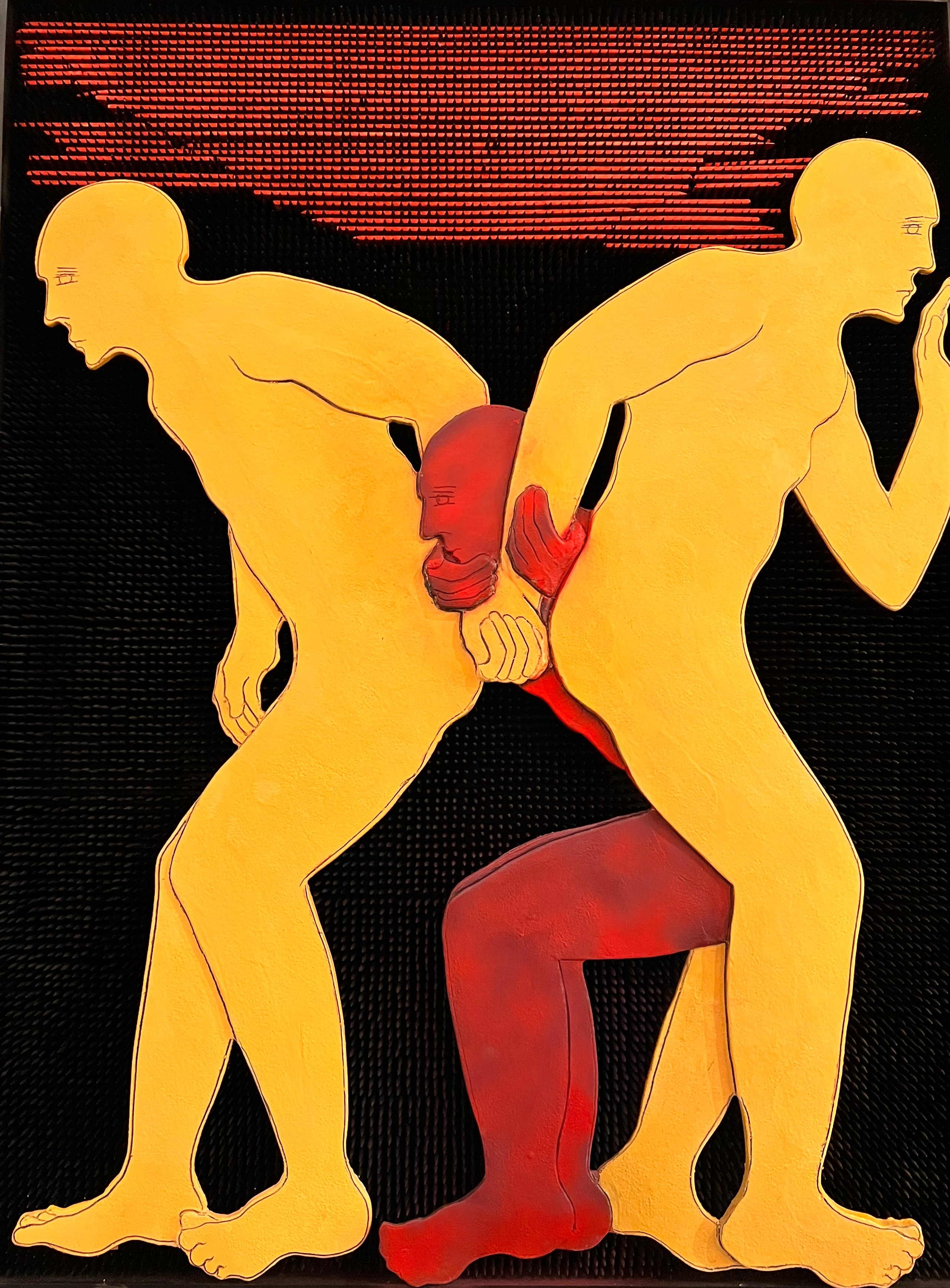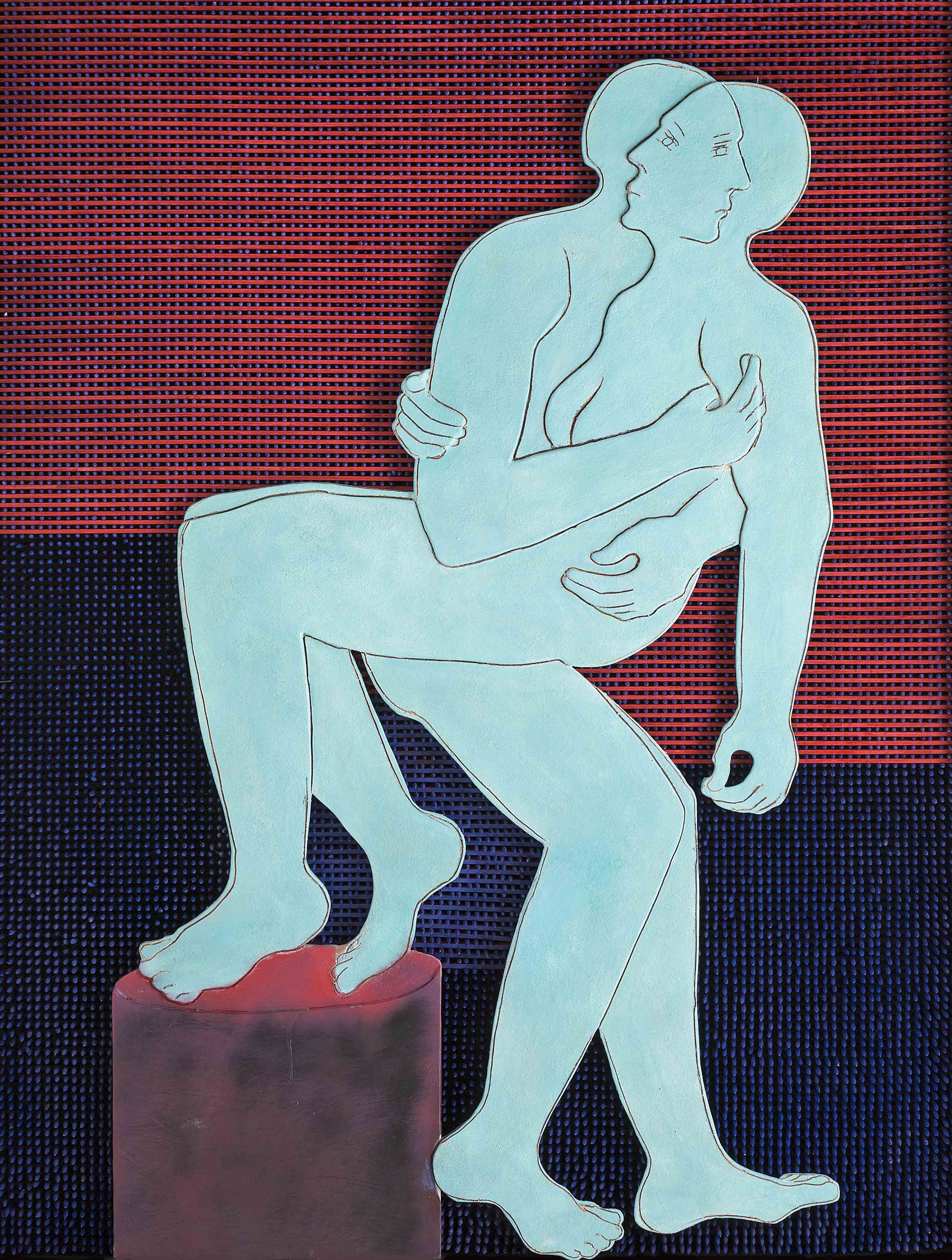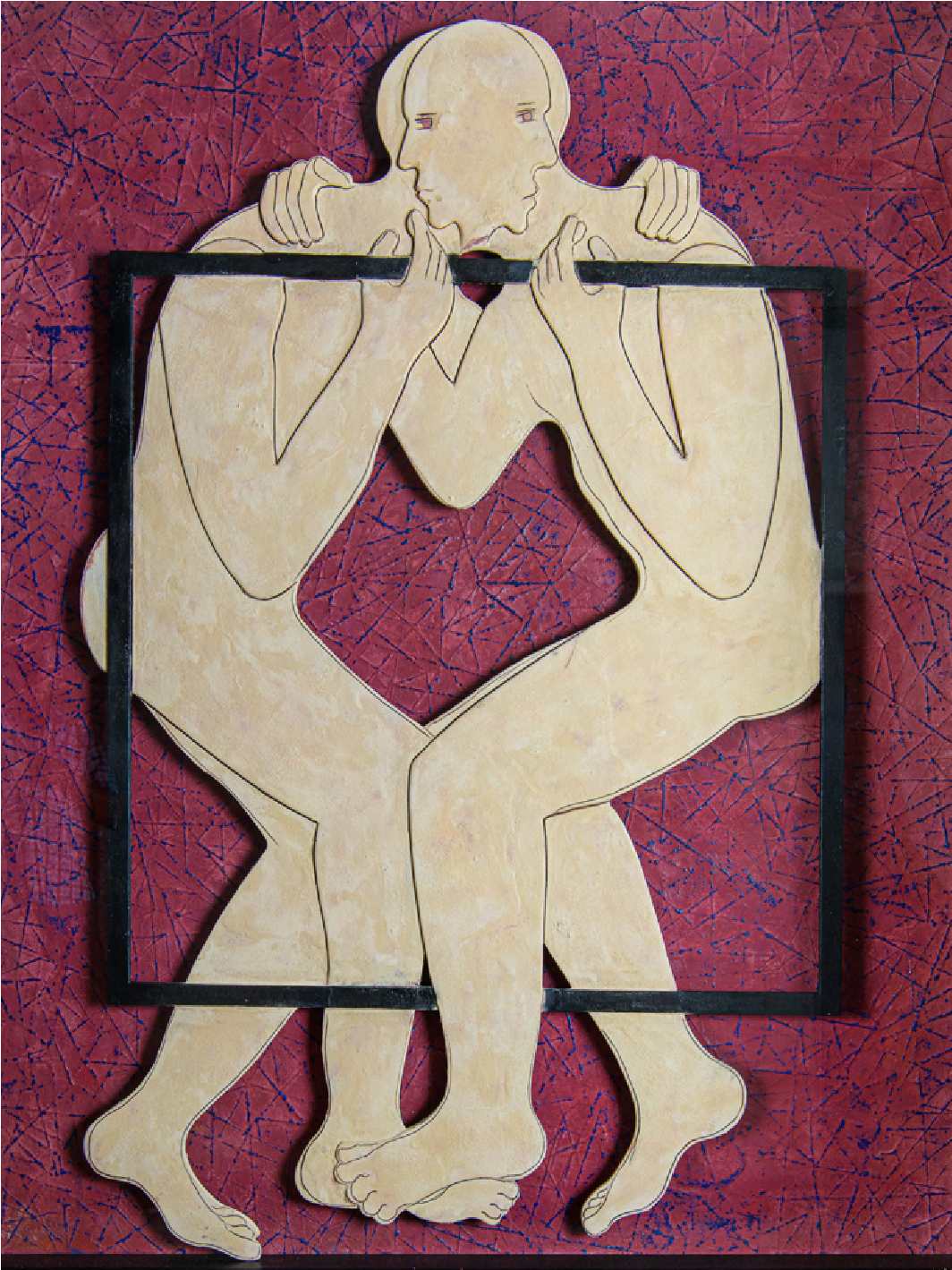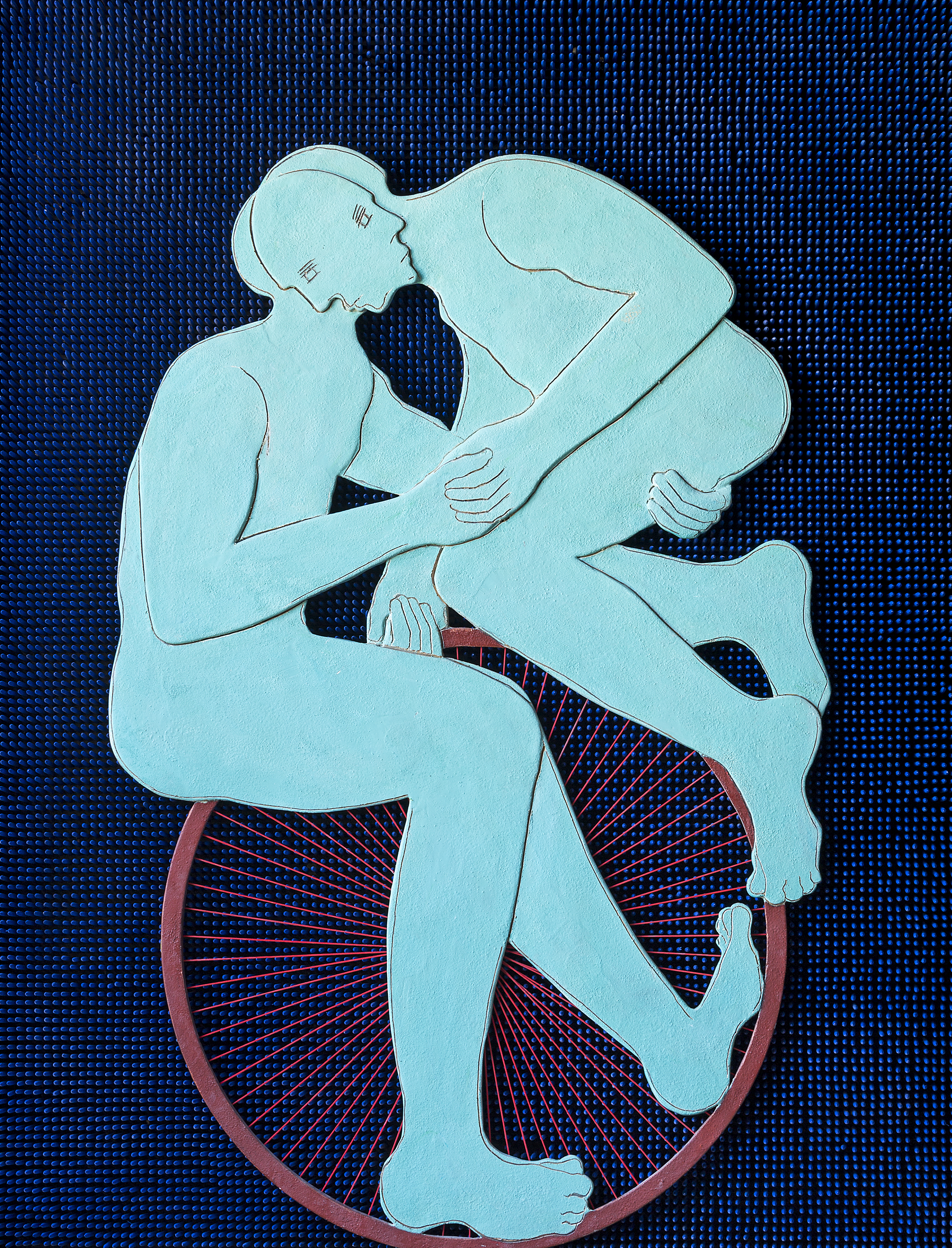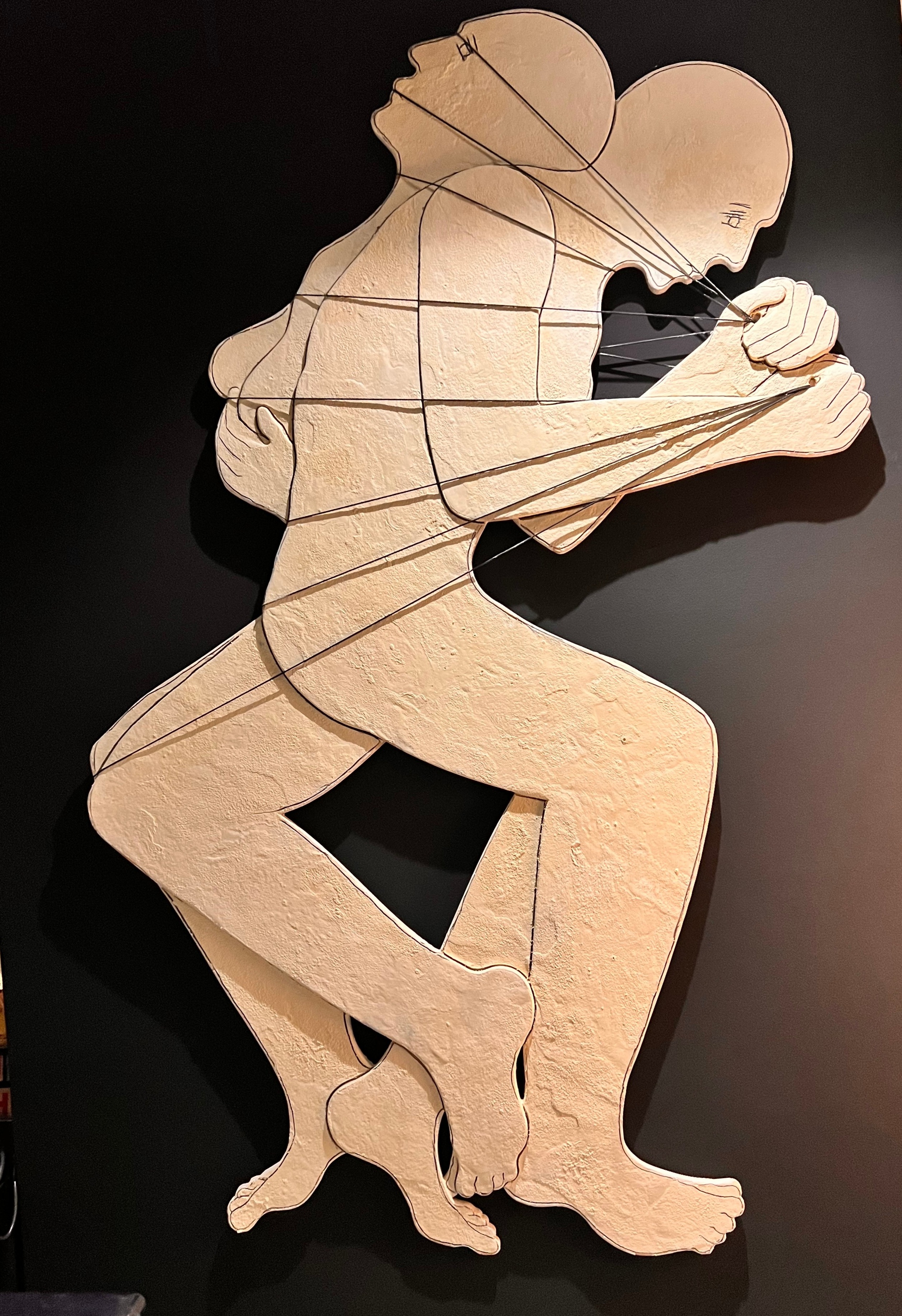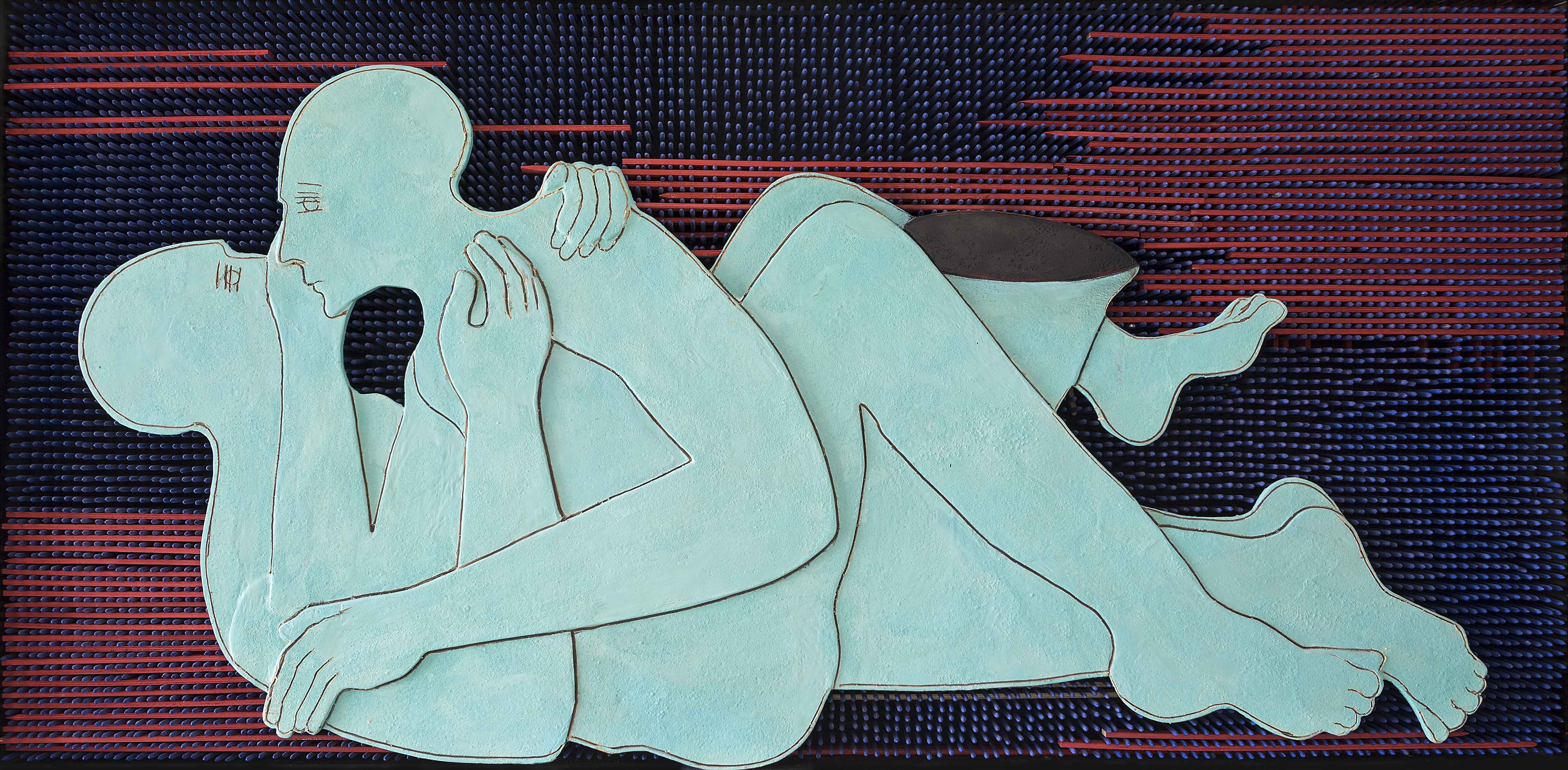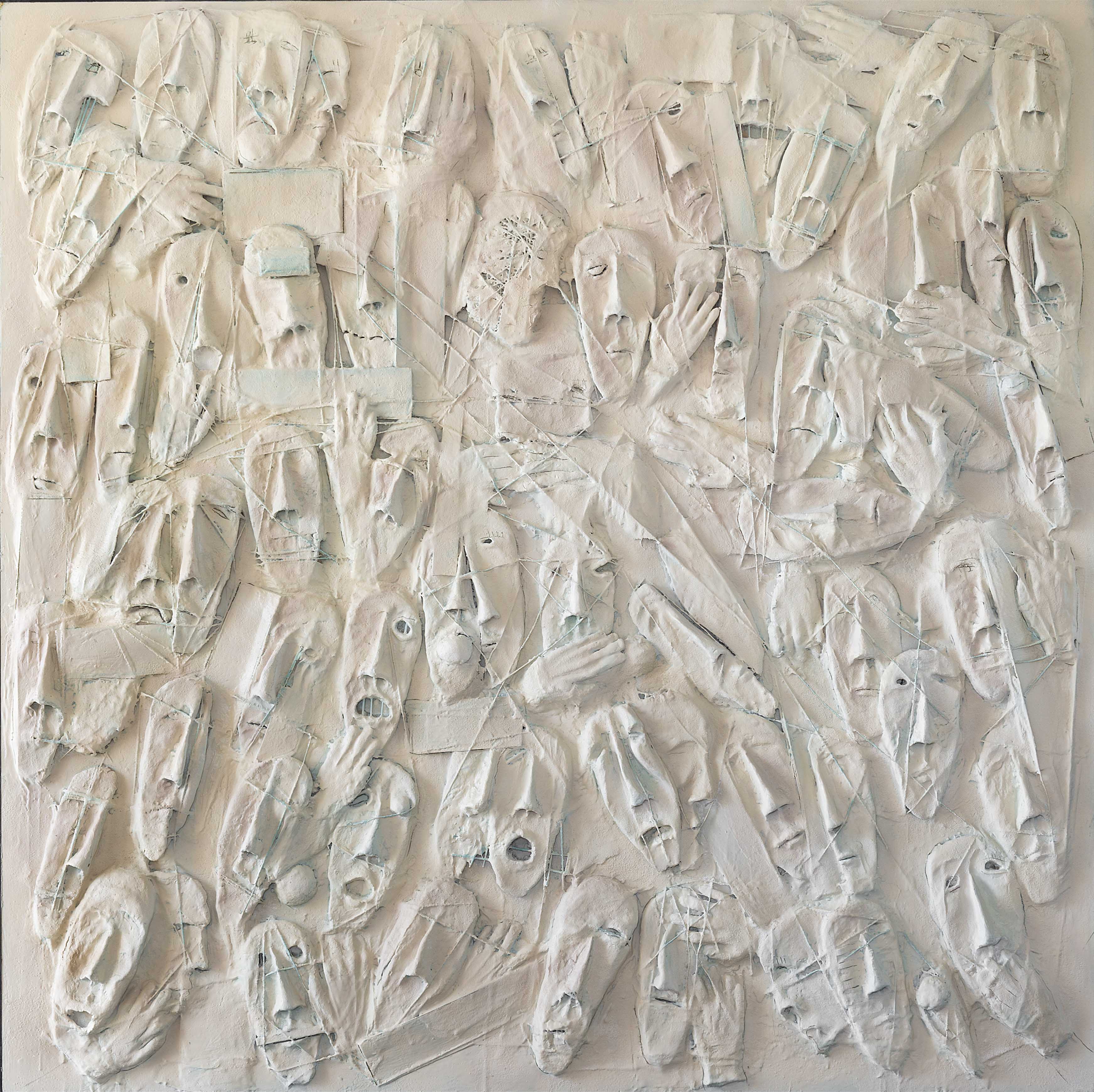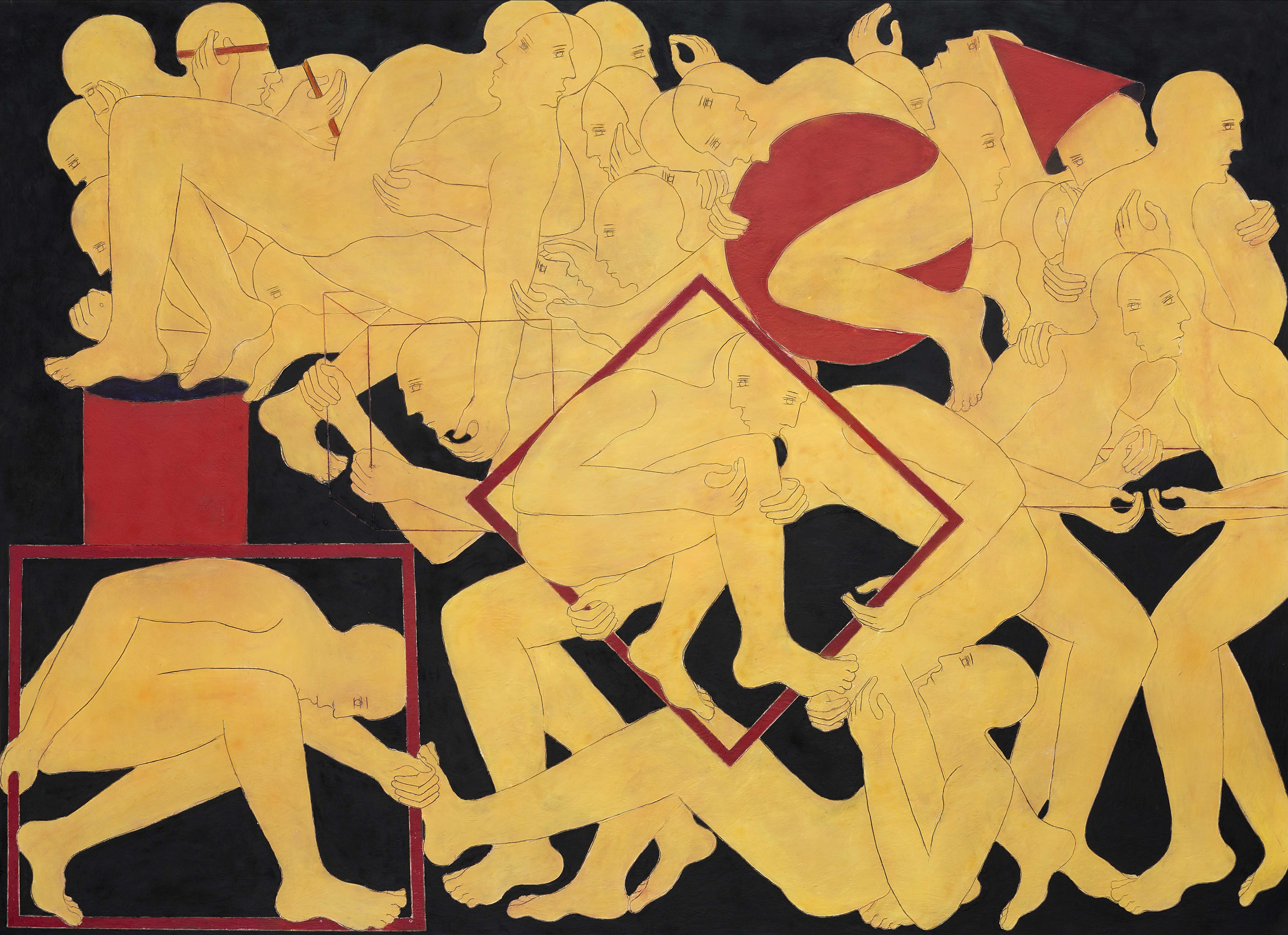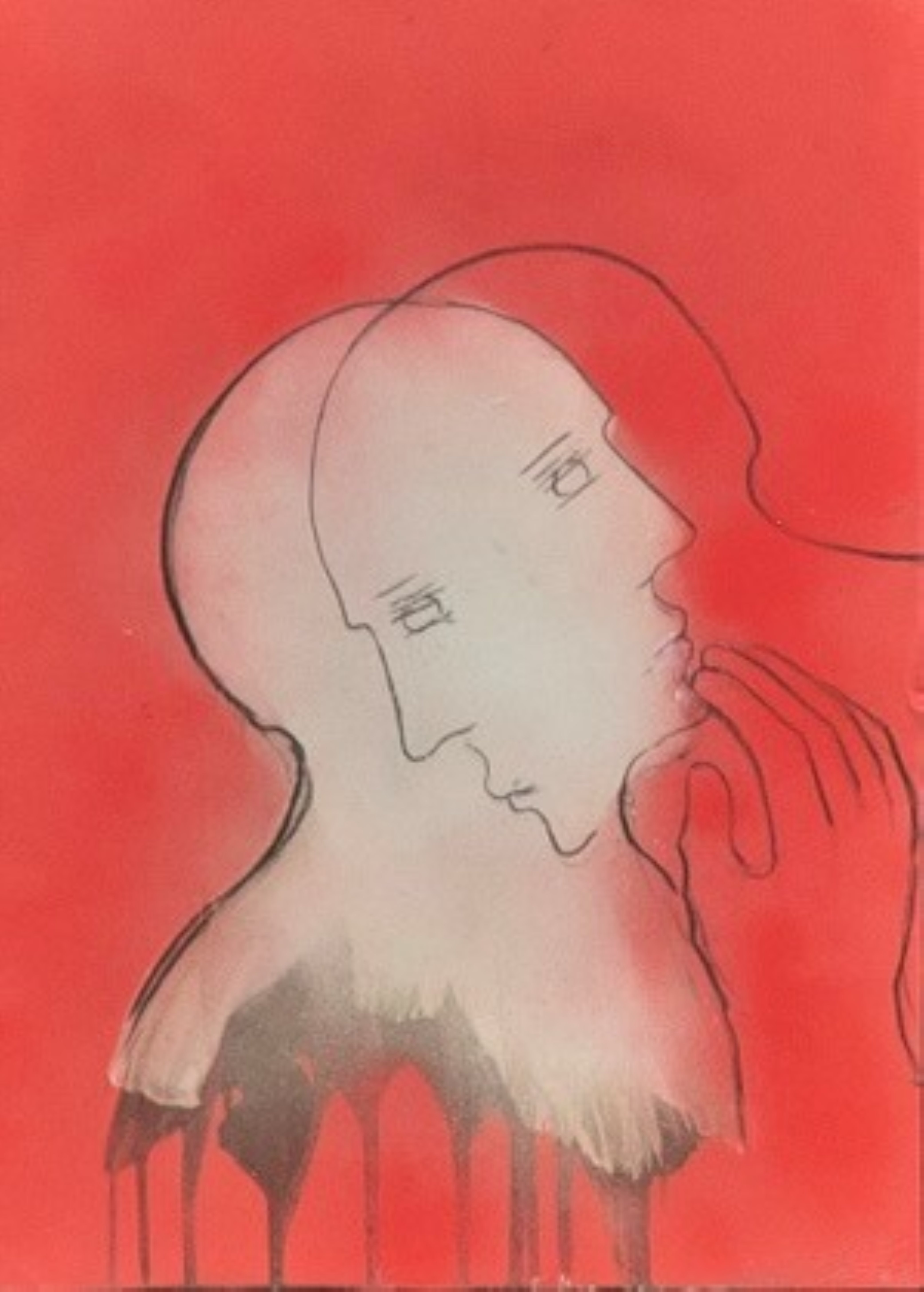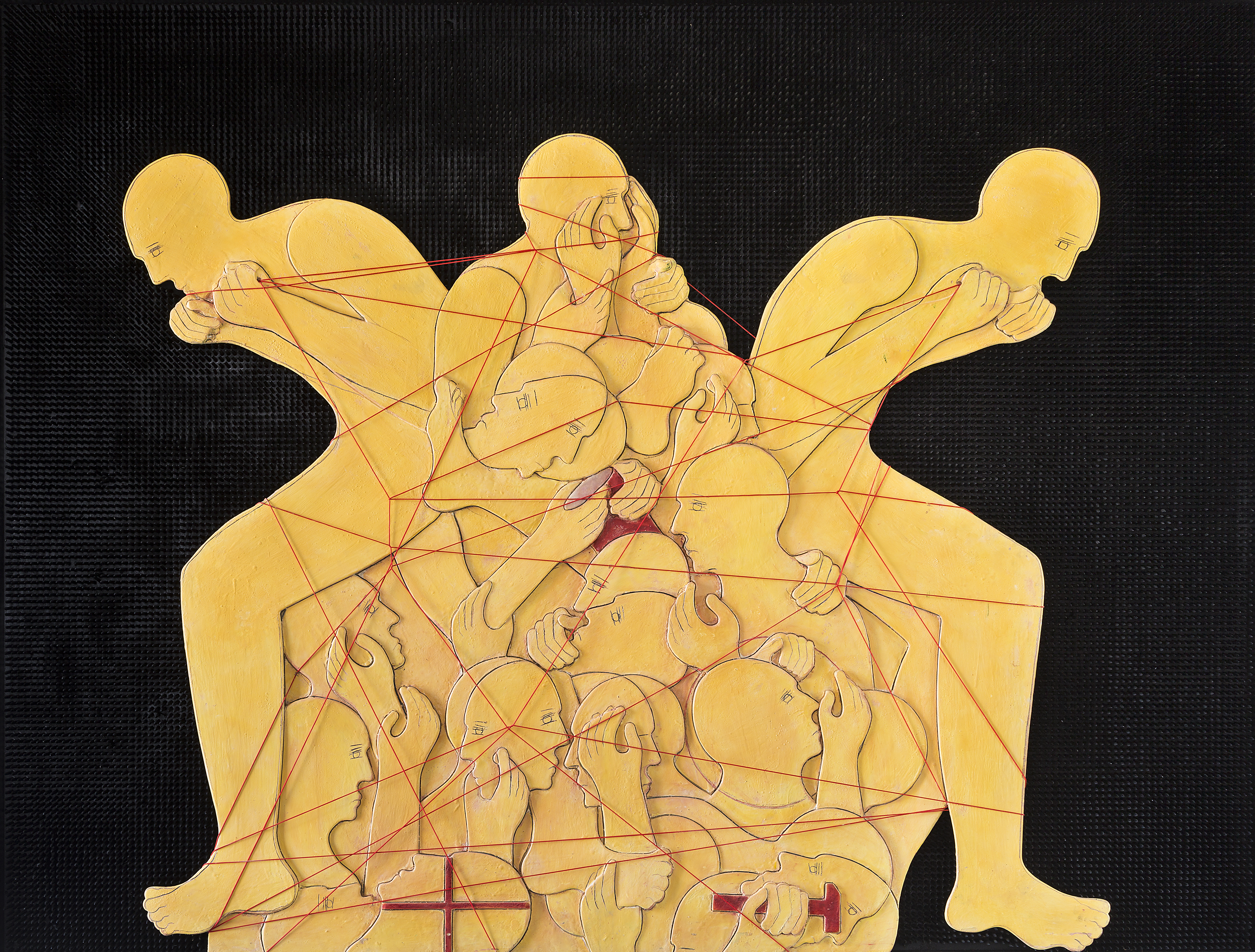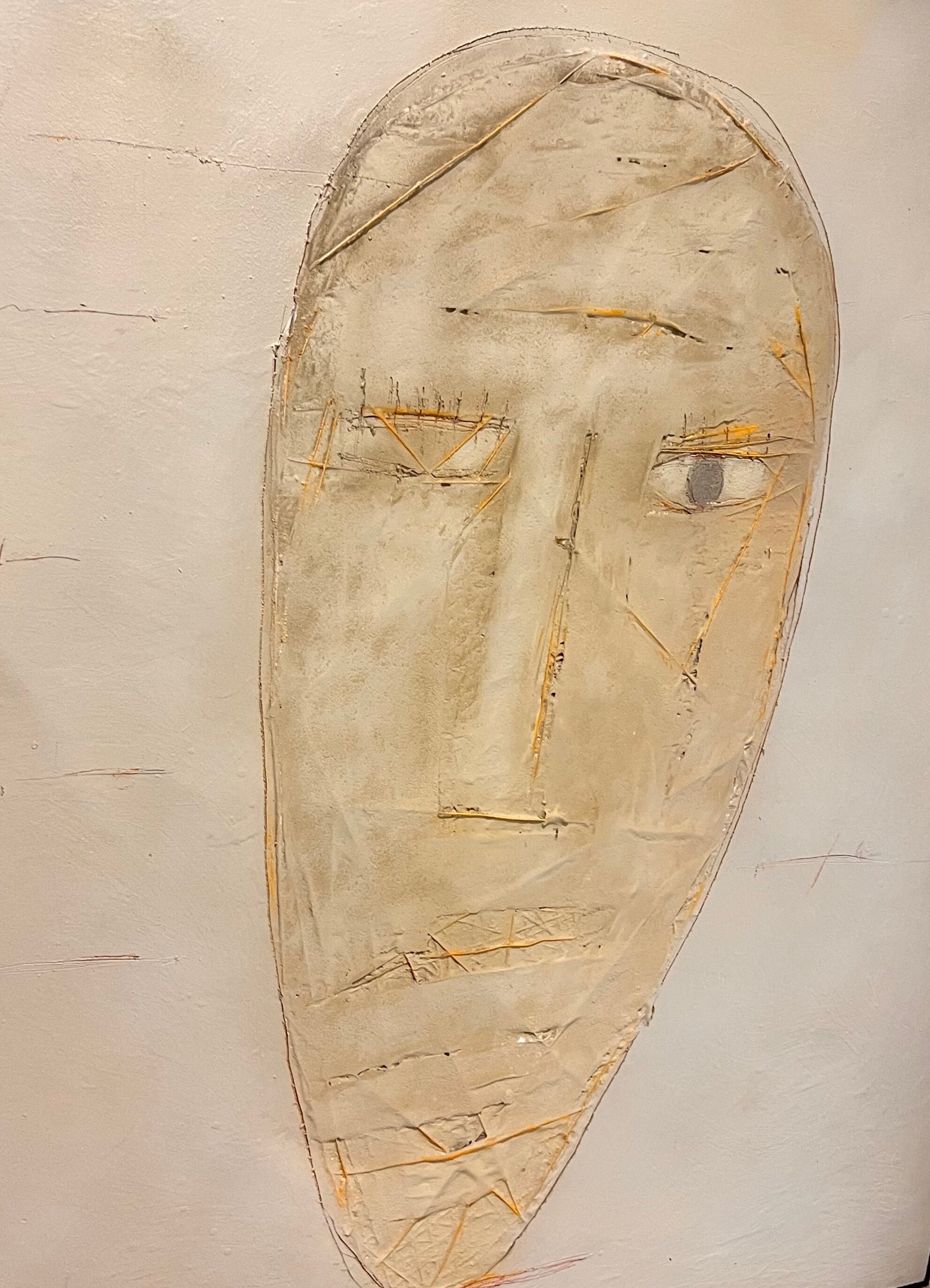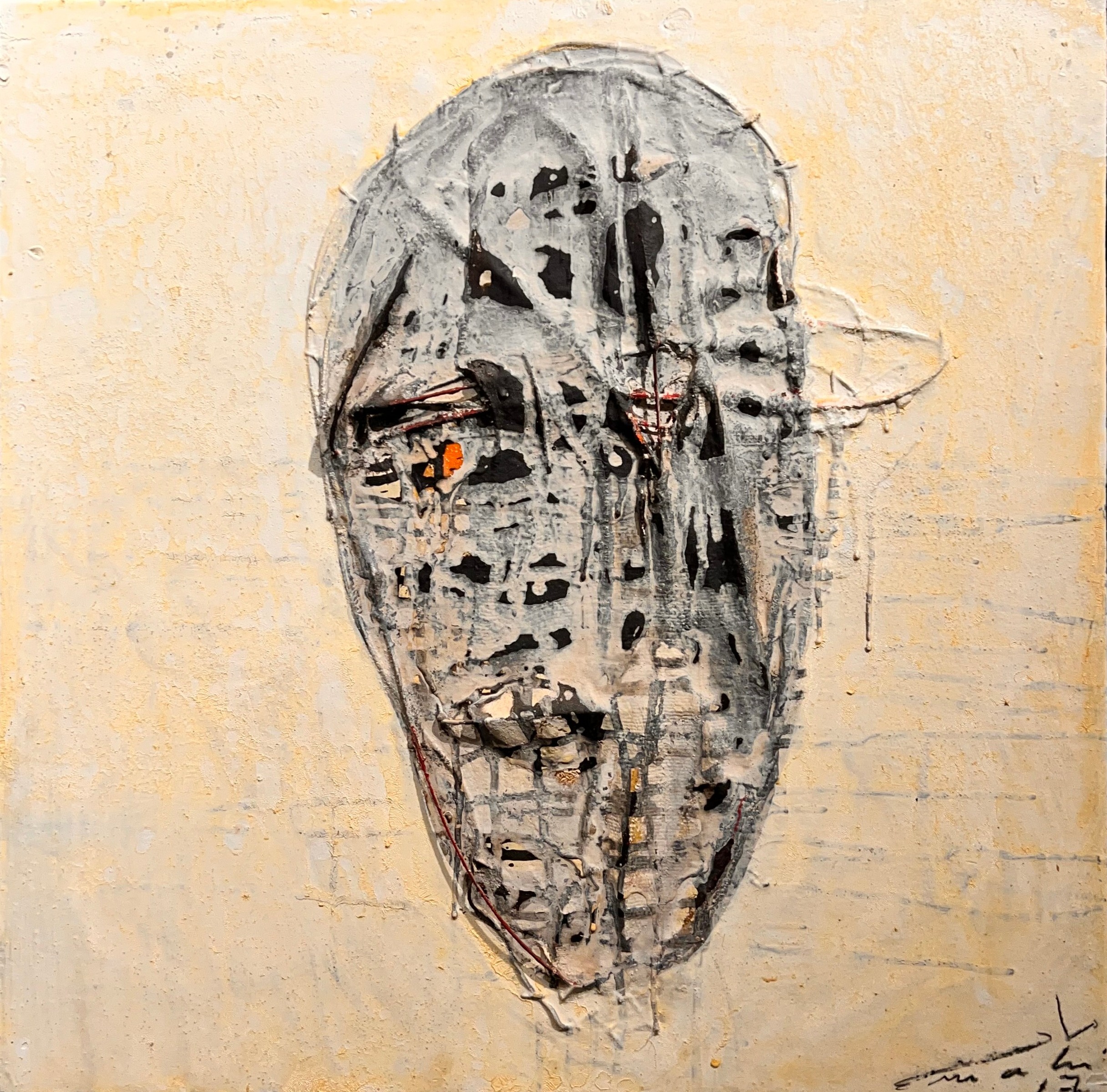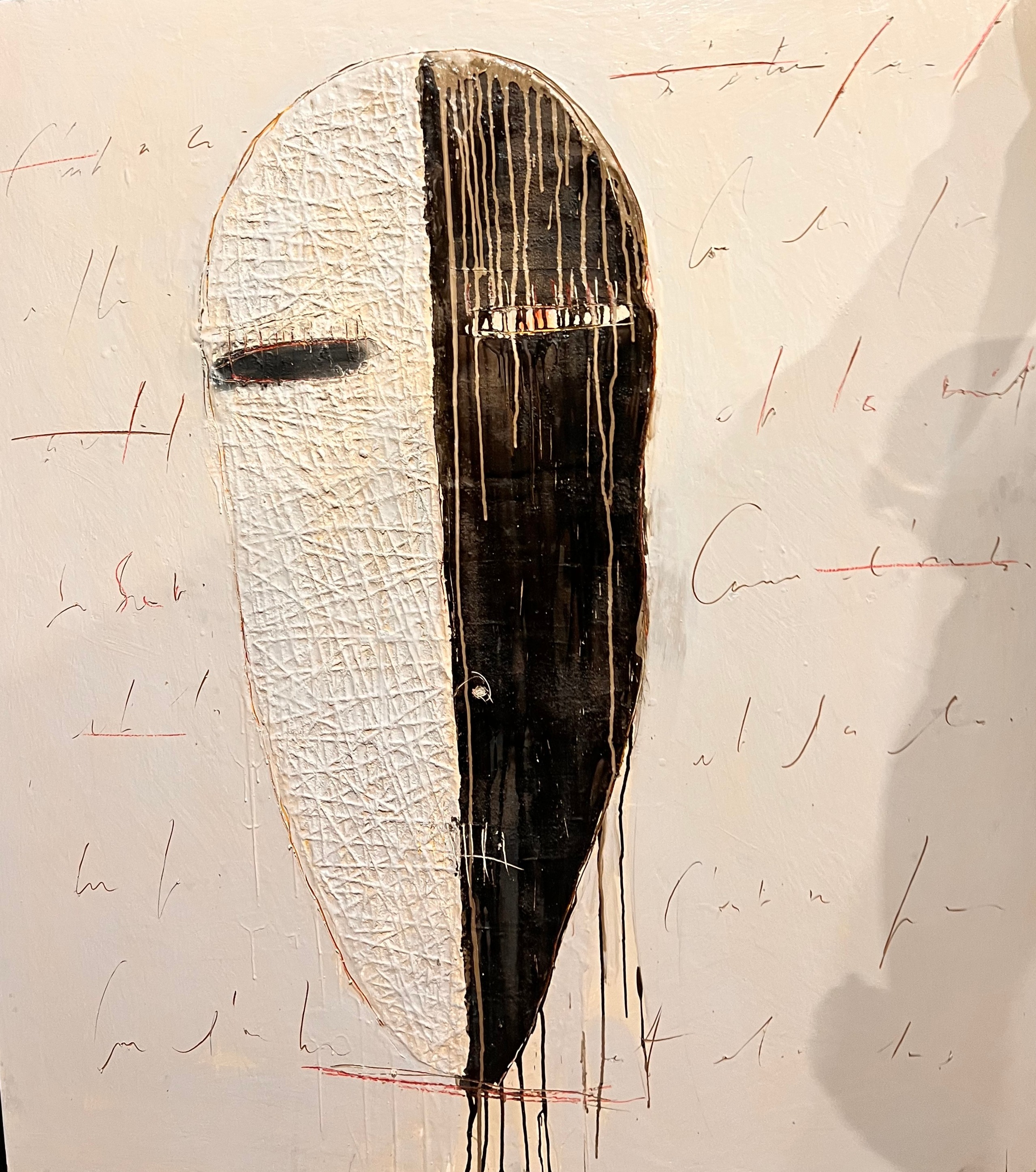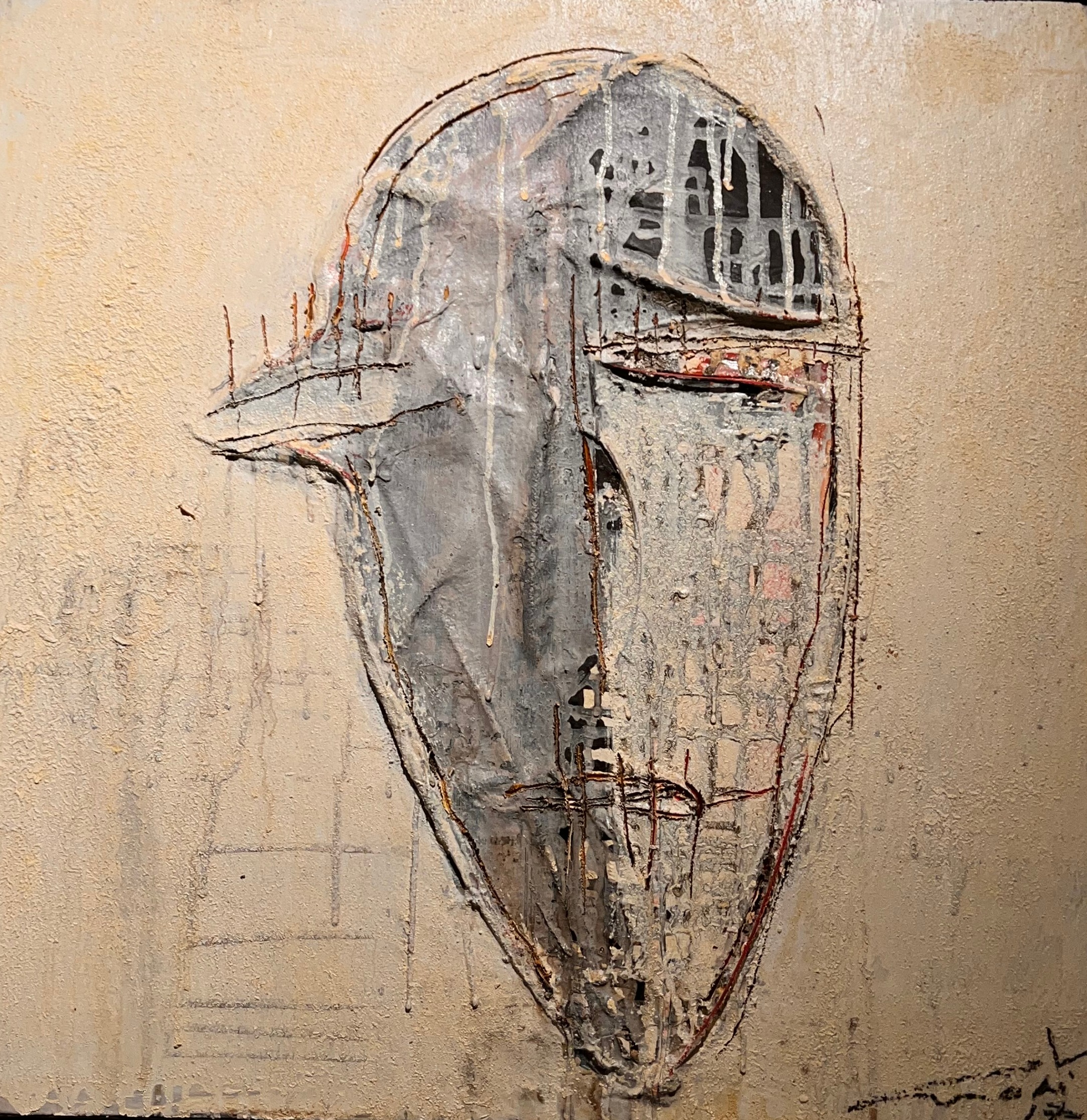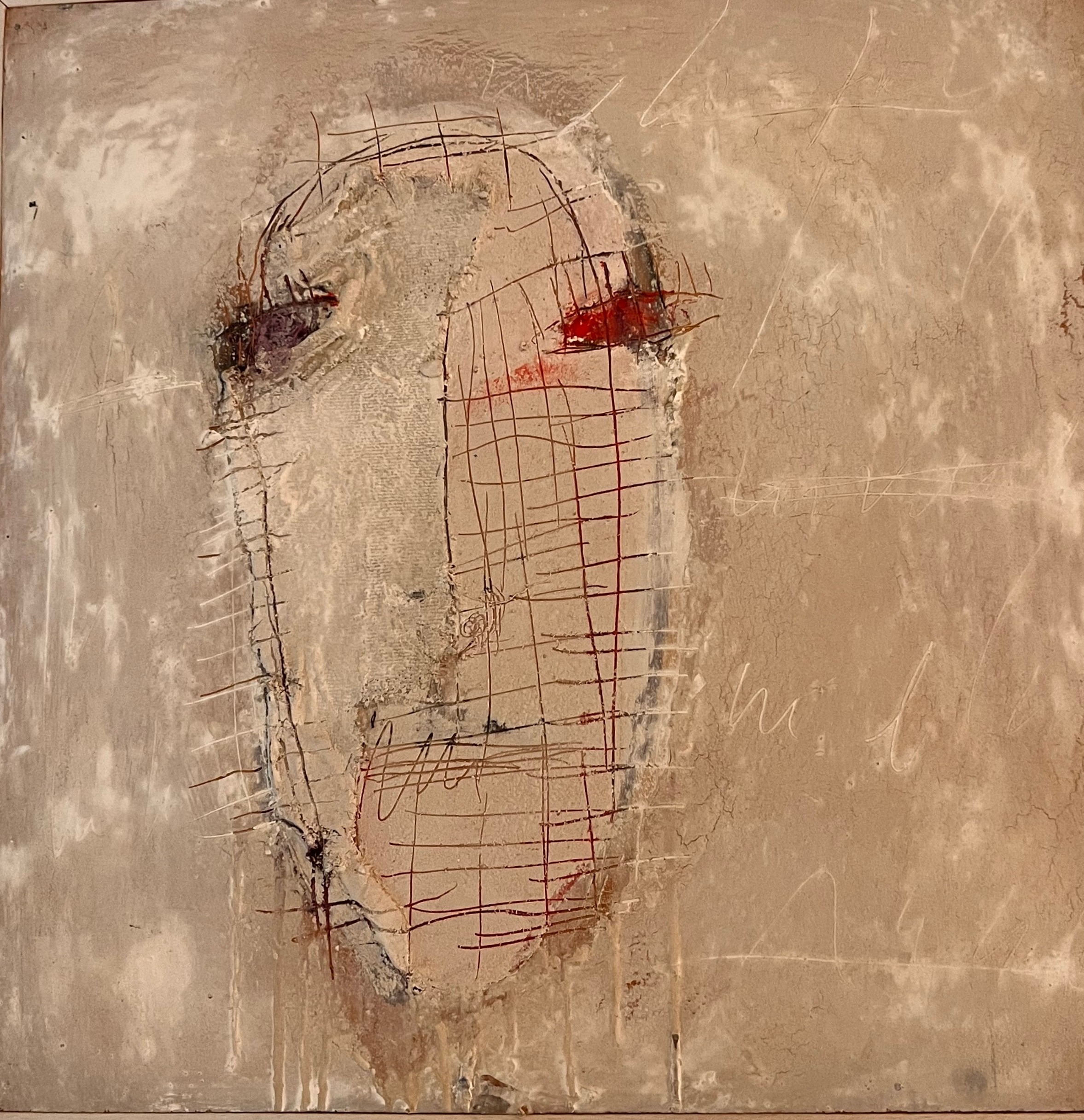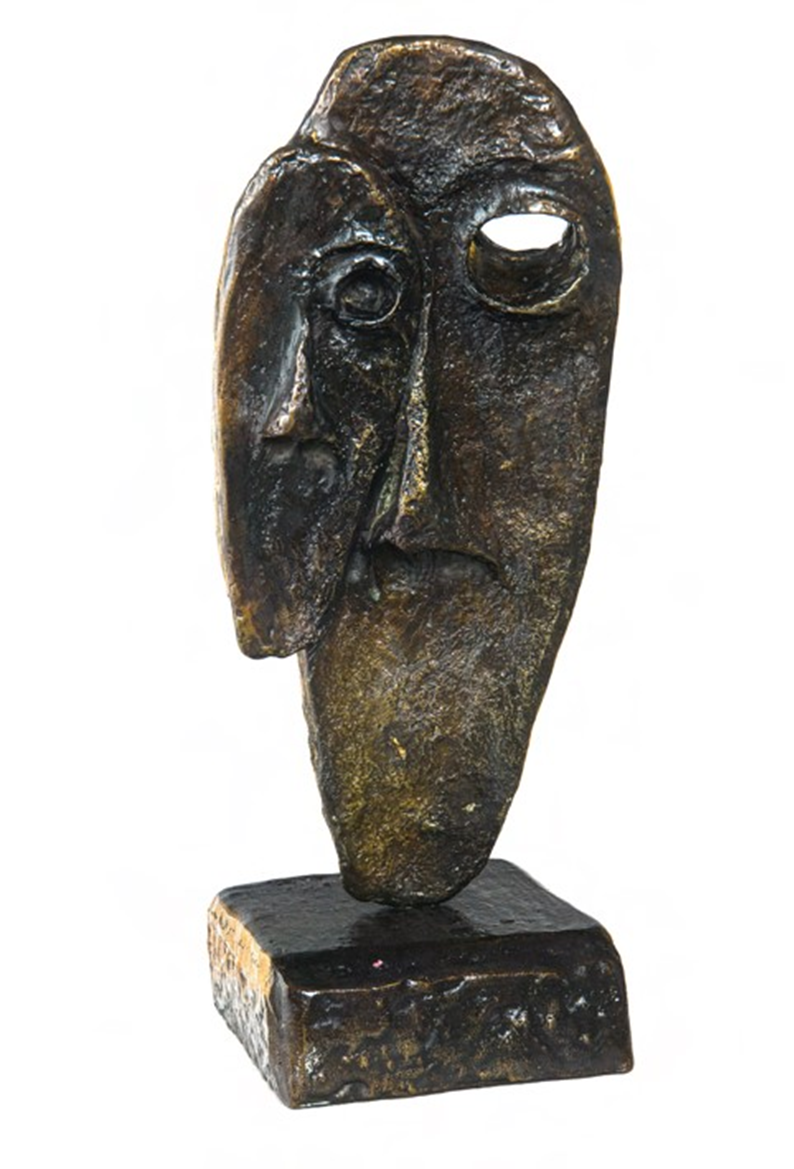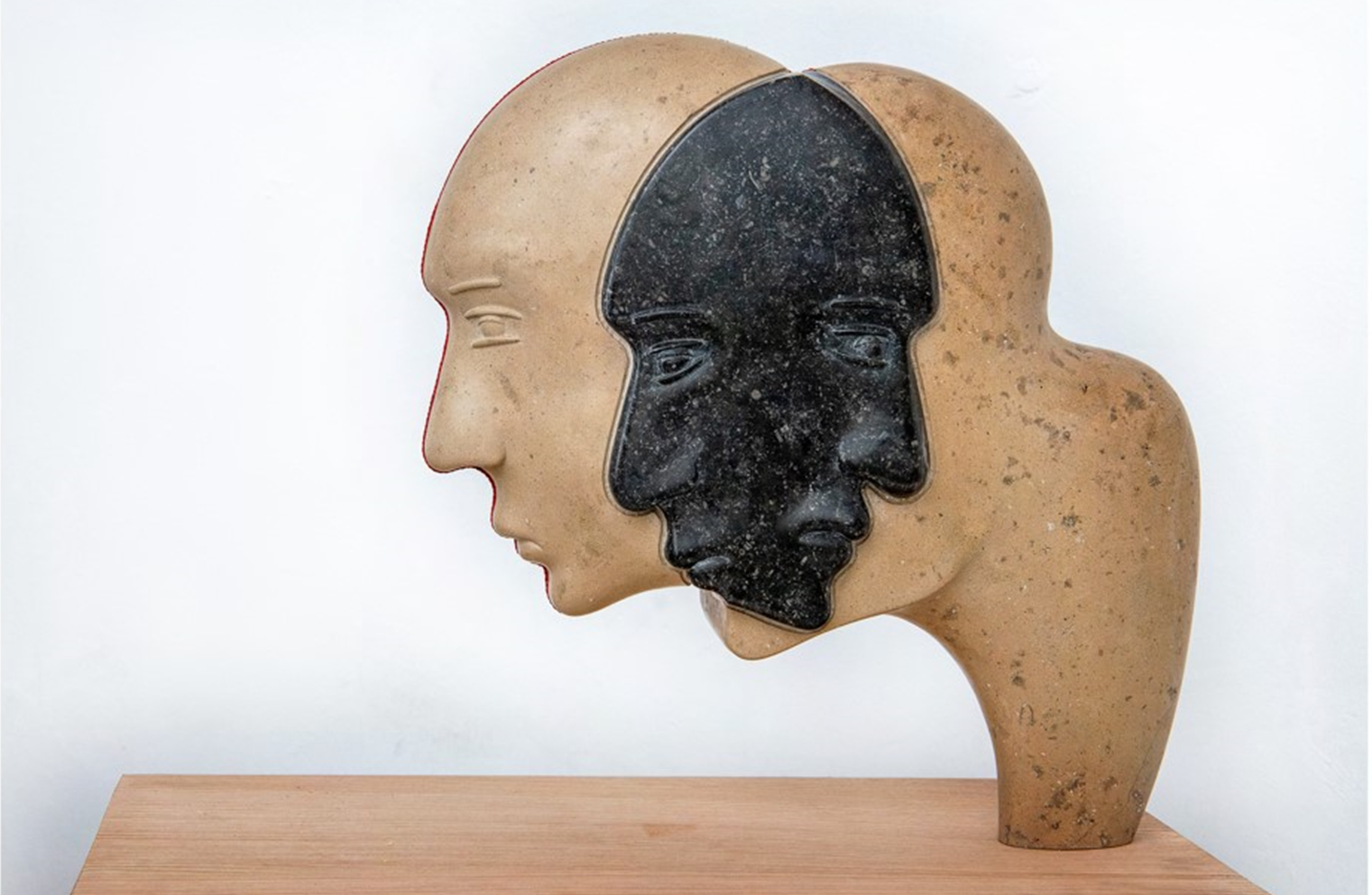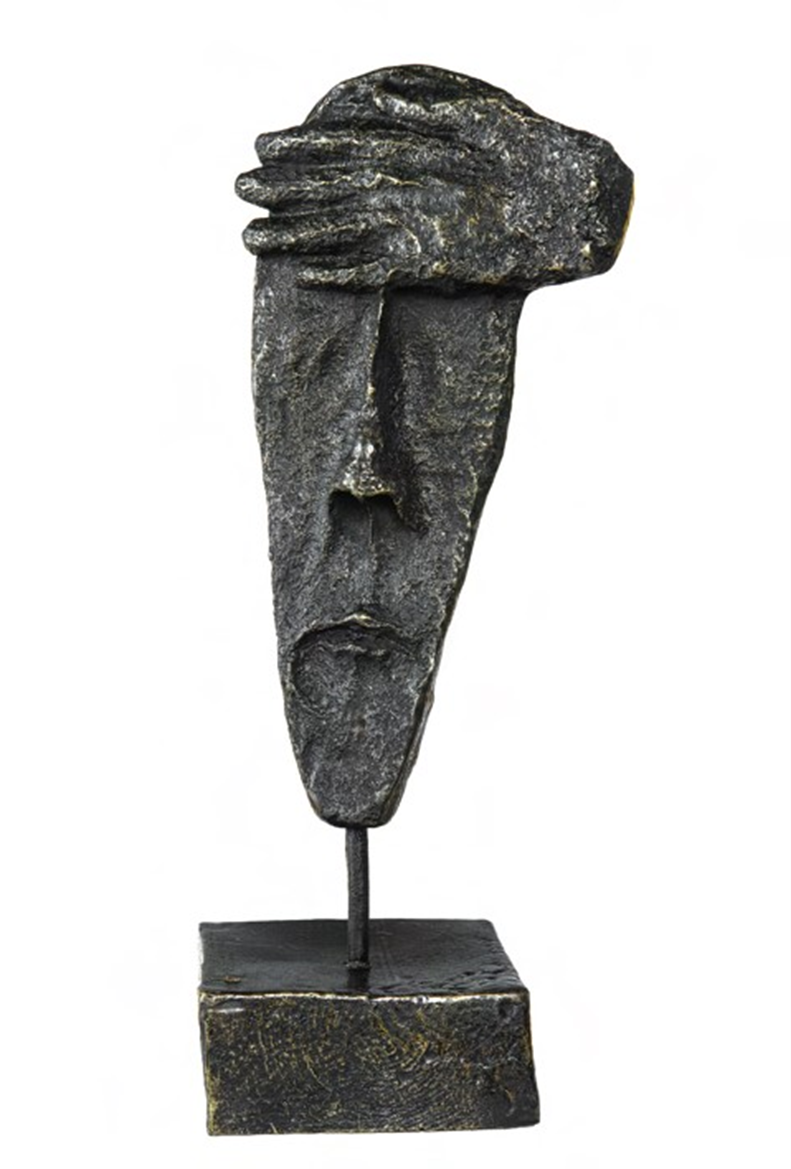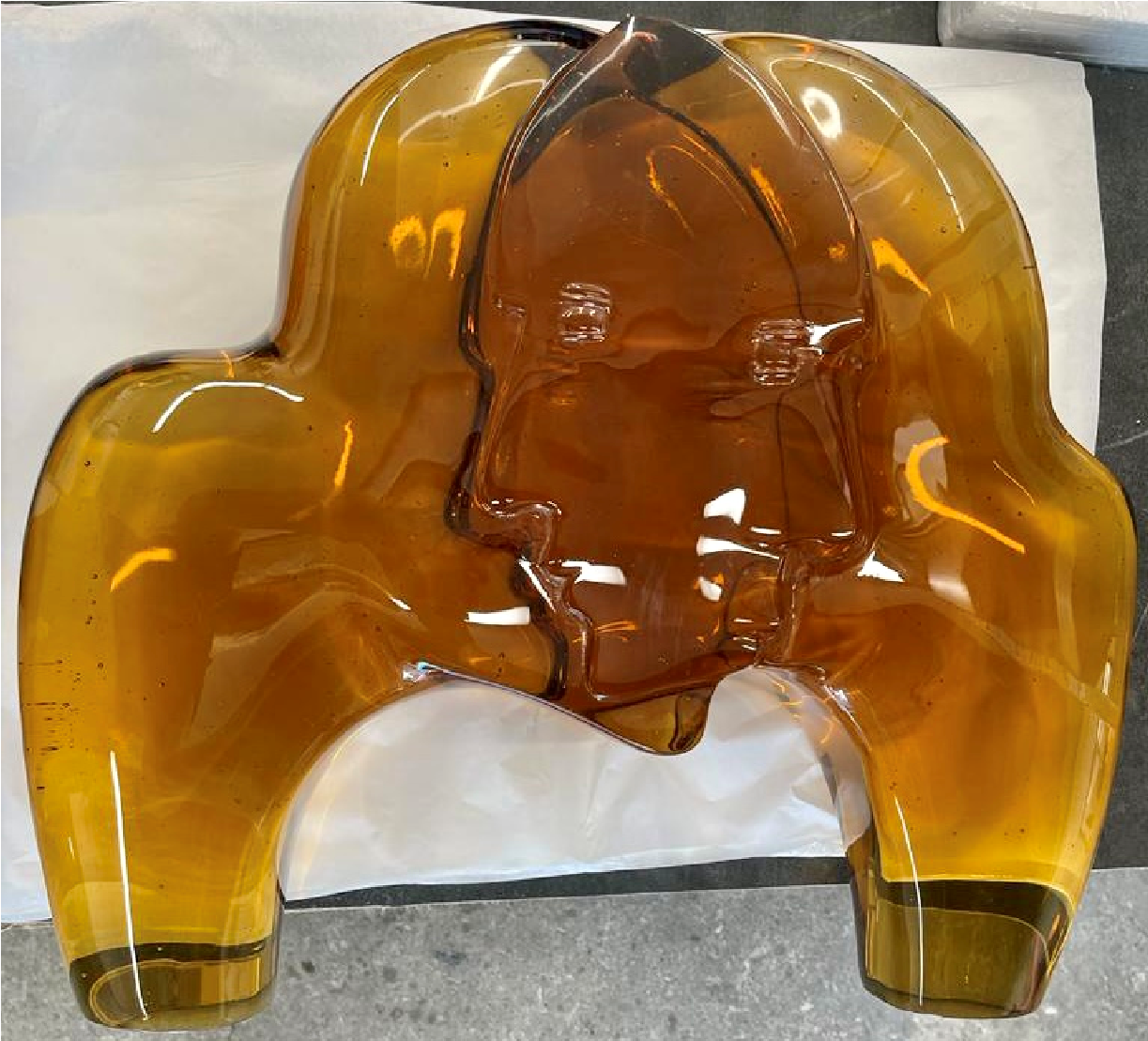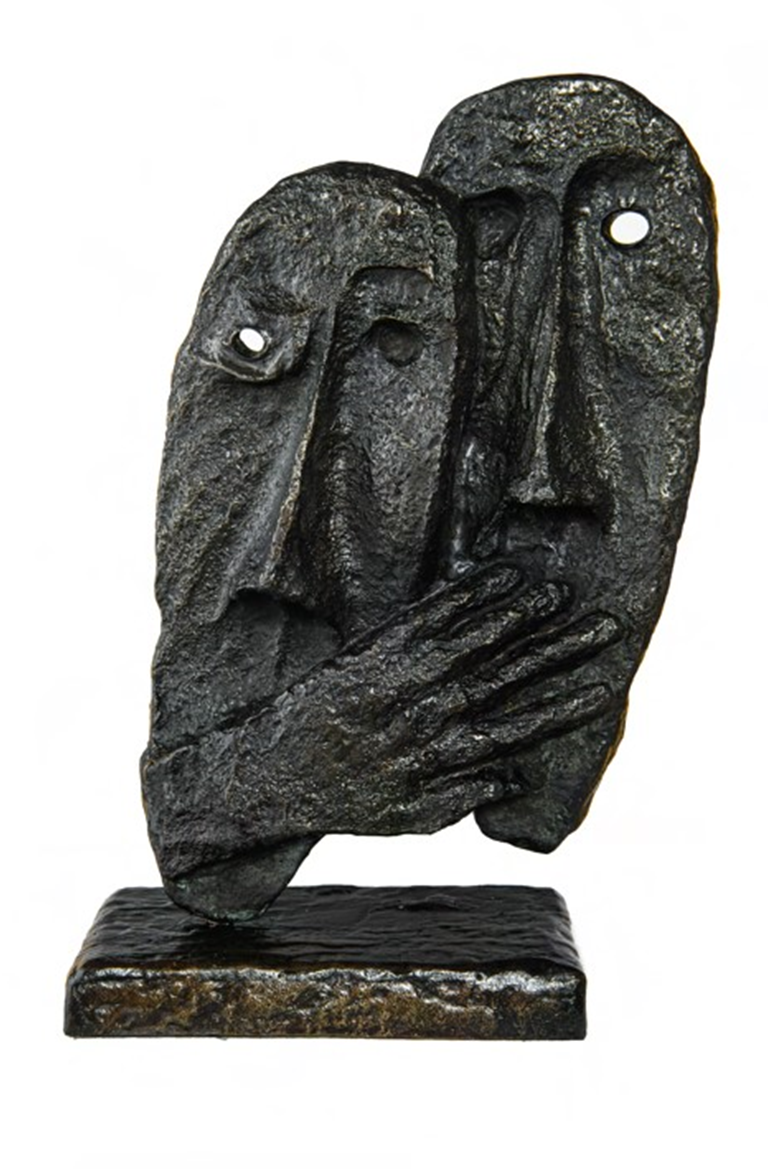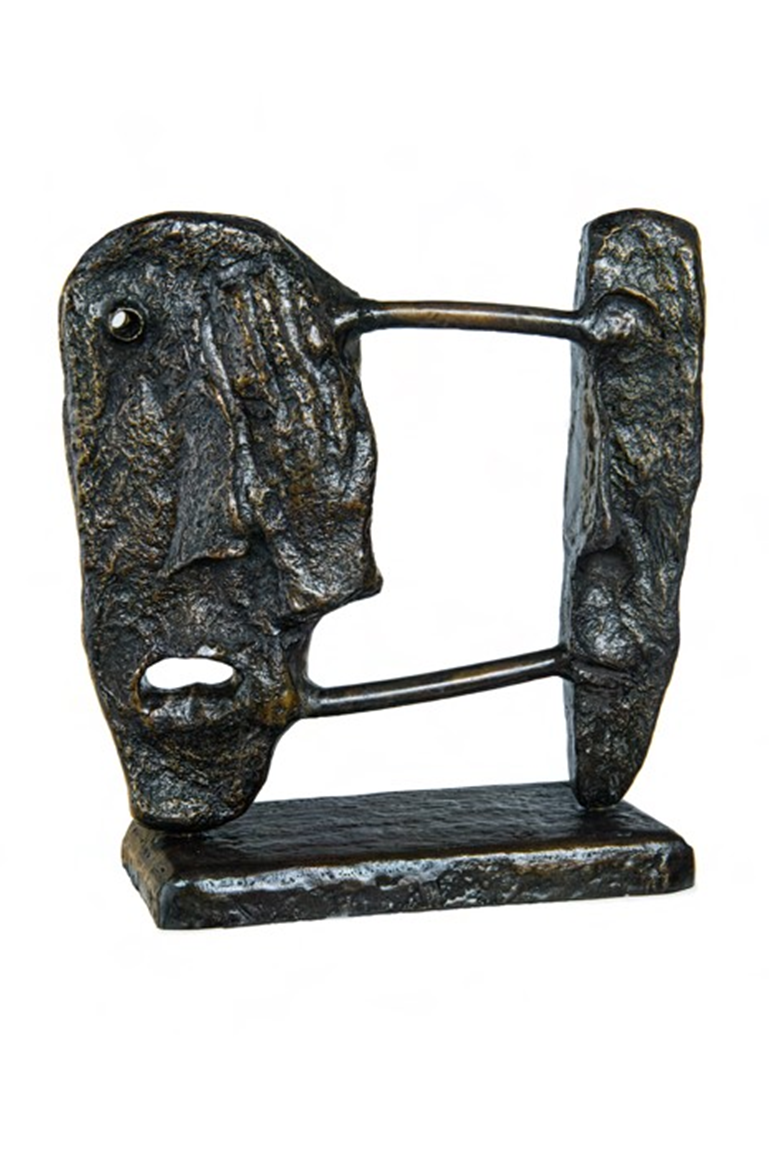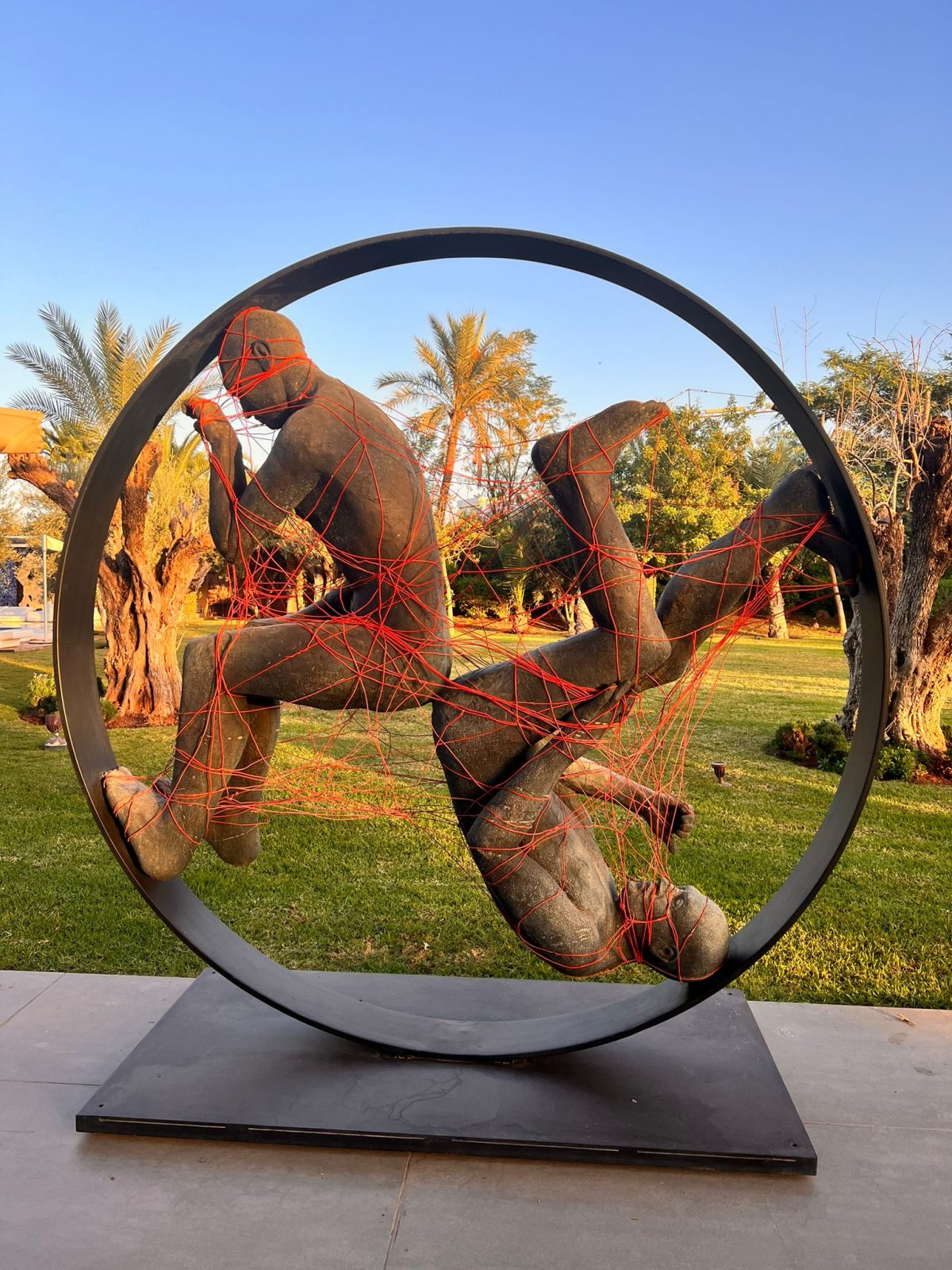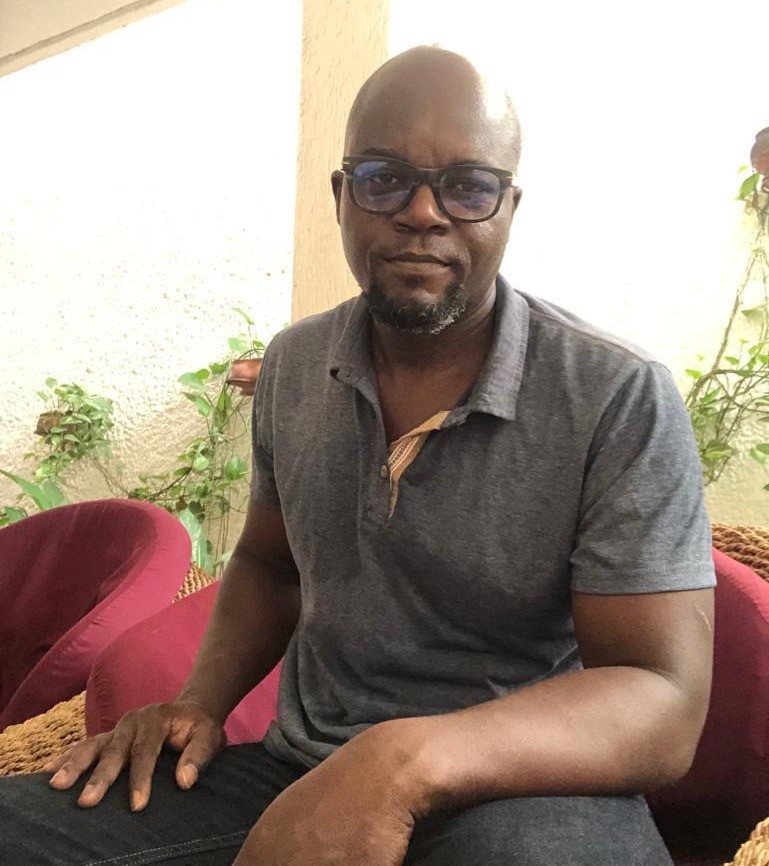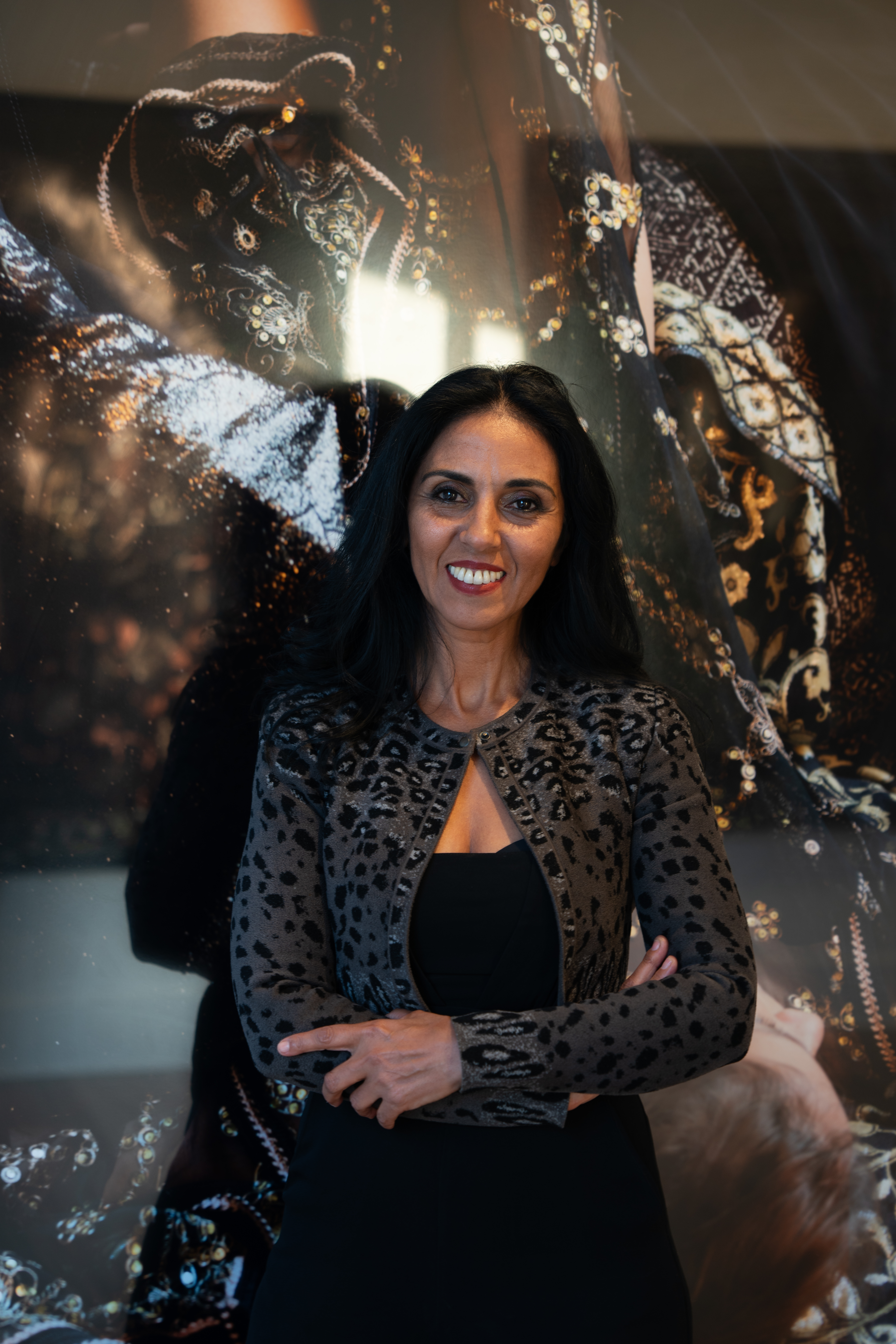Mahi Binebine
Mahi Binebine, born in Marrakech in 1959, is a painter, author and sculptor. He moved to Paris in 1980, where he completed his studies in mathematics and taught this subject for eight years. It was here that he engaged in his first artistic endeavours, before moving to New York in 1994 to devote himself to painting and writing. “The writing is done through small touches of the inside that create the images, while painting is the creation of the image which allows access to the inside,” he says.
Mahi Binebine’s work confronts the extremes present in the human condition through the exploration of binary themes: love and hate, peace and violence, hope and despair, tragedy and comedy. His canvases are primarily composed of anonymous figures that have been reduced to ambiguous silhouettes; their outlines are interwoven, displaying bodies that are inescapably connected. He creates compositions that are at once organic and geometric; figures are intertwined and either wrestle with, or embrace one another within an unsettling, hostile, and confining configuration.
In 2009 Binebine founded the Ali Zaoua Foundation with director Nabyl Ayouch. He has opened cultural centres in disadvantaged neighbourhoods across Morocco, in order to create a space for young people to reconcile with their social environment, while learning to express themselves through dialogue, as an alternative to violence.
Binebine has written several novels which have been translated into a dozen languages. His paintings and sculptures have been included in numerous exhibitions and biennials globally. His work can be found in the permanent collection of the Guggenheim Museum in New York and in other museums worldwide. In 2002, Binebine returned to his native Marrakech, where he currently lives and works.
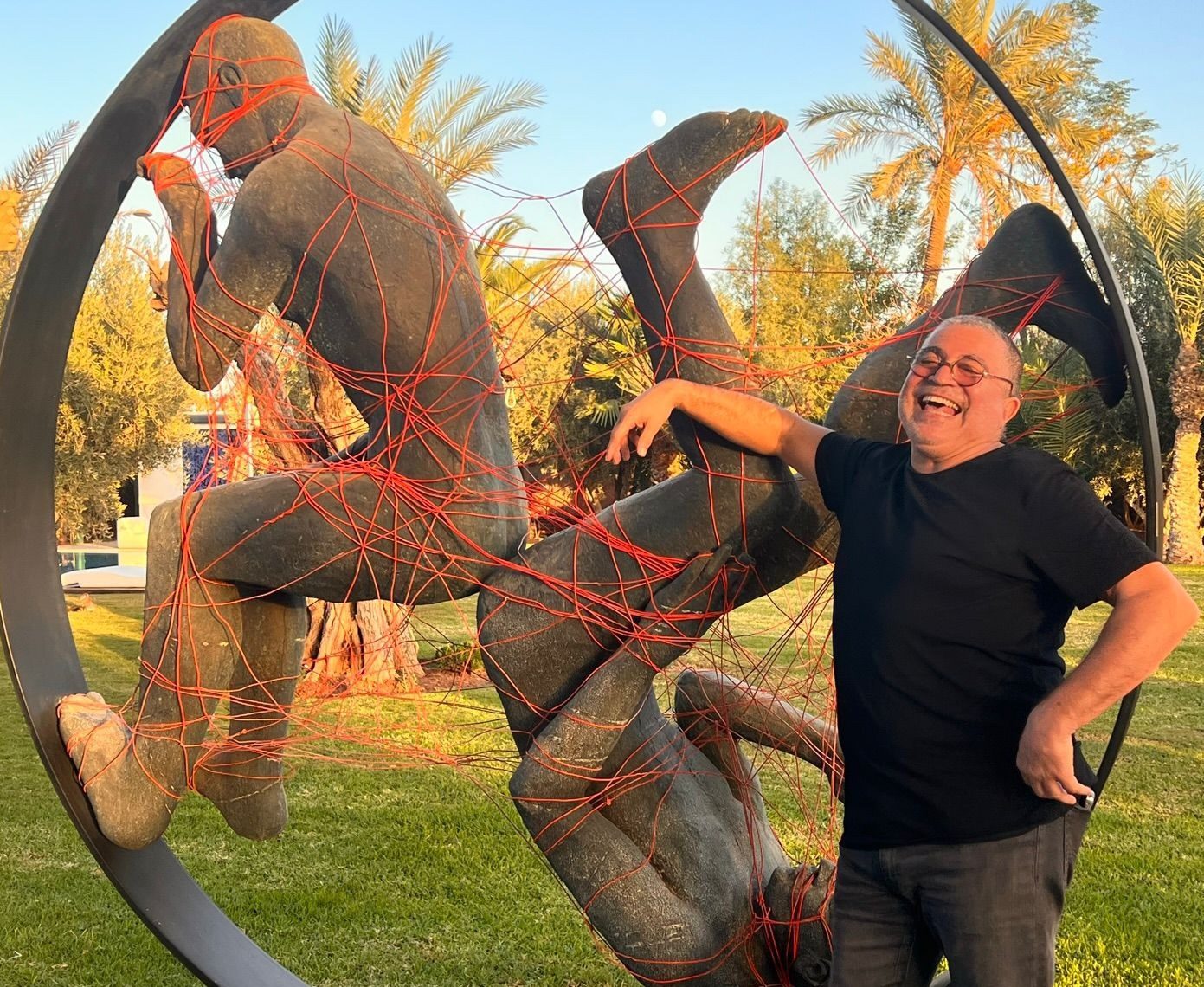
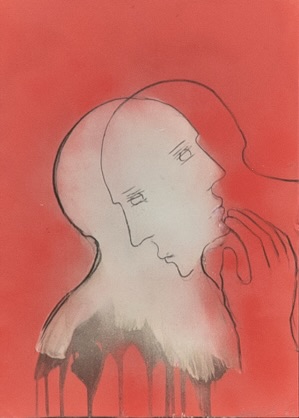
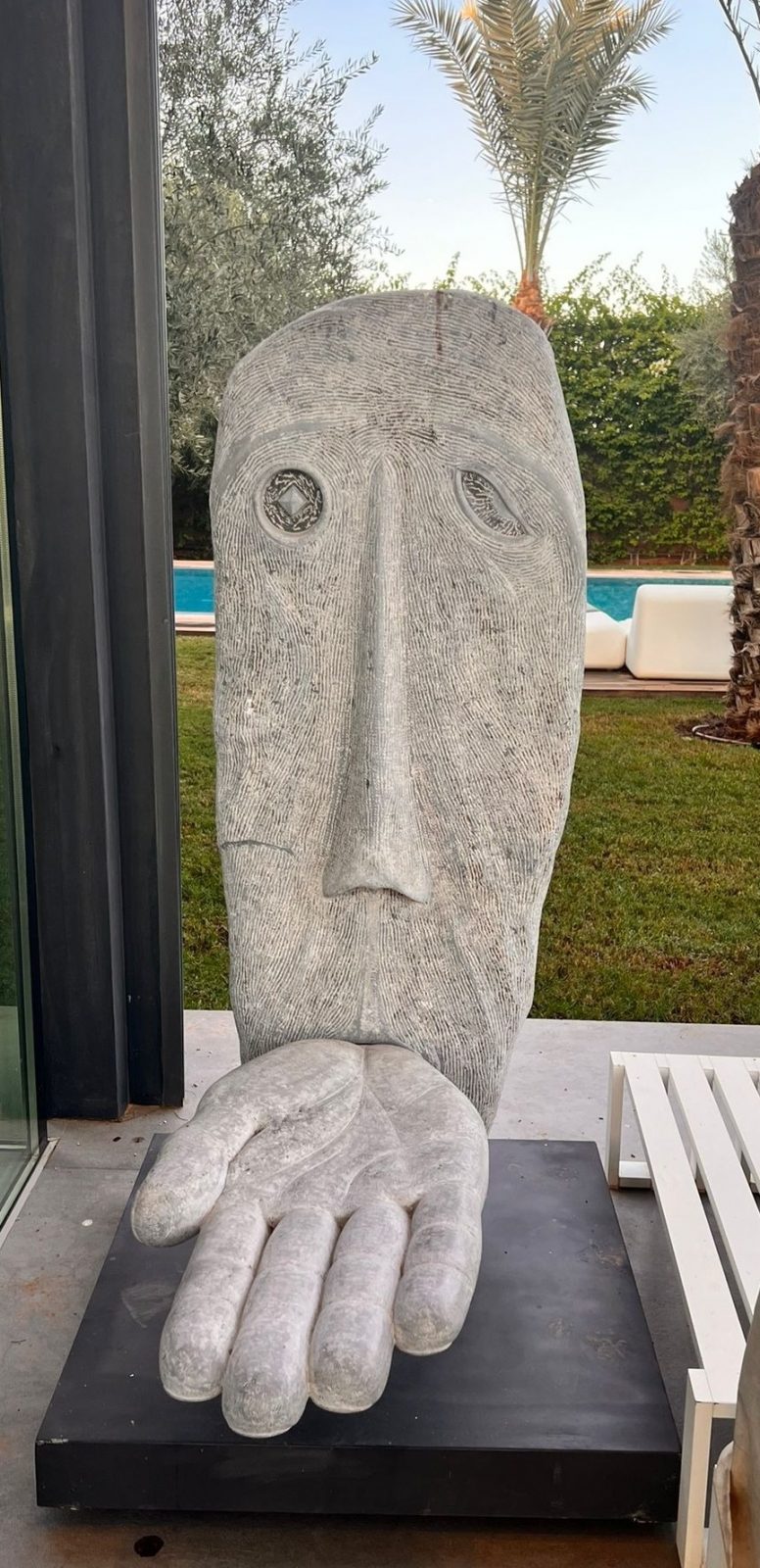
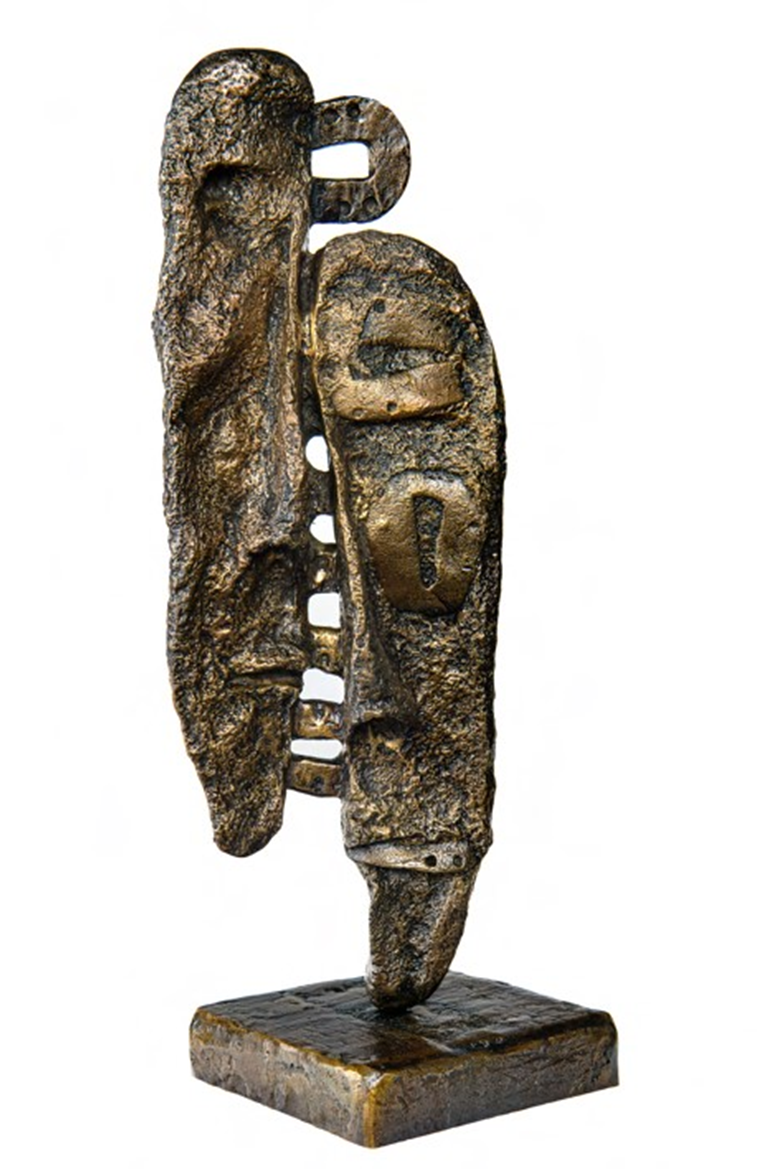

Mahi Binebine, born in Marrakech in 1959, is a painter, author and sculptor. He moved to Paris in 1980, where he completed his studies in mathematics and taught this subject for eight years. It was here that he engaged in his first artistic endeavours, before moving to New York in 1994 to devote himself to painting and writing. “The writing is done through small touches of the inside that create the images, while painting is the creation of the image which allows access to the inside,” he says.
Mahi Binebine’s work confronts the extremes present in the human condition through the exploration of binary themes: love and hate, peace and violence, hope and despair, tragedy and comedy. His canvases are primarily composed of anonymous figures that have been reduced to ambiguous silhouettes; their outlines are interwoven, displaying bodies that are inescapably connected. He creates compositions that are at once organic and geometric; figures are intertwined and either wrestle with, or embrace one another within an unsettling, hostile, and confining configuration.
In 2009 Binebine founded the Ali Zaoua Foundation with director Nabyl Ayouch. He has opened cultural centres in disadvantaged neighbourhoods across Morocco, in order to create a space for young people to reconcile with their social environment, while learning to express themselves through dialogue, as an alternative to violence.
Binebine has written several novels which have been translated into a dozen languages. His paintings and sculptures have been included in numerous exhibitions and biennials globally. His work can be found in the permanent collection of the Guggenheim Museum in New York and in other museums worldwide. In 2002, Binebine returned to his native Marrakech, where he currently lives and works.
